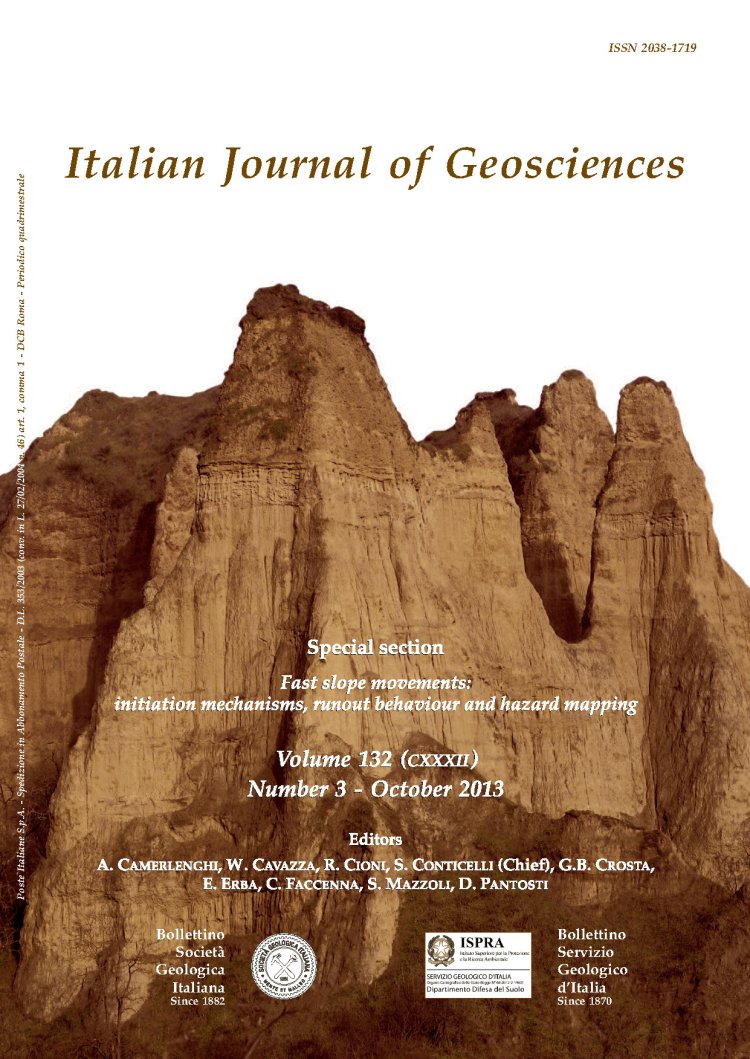
Ligurian-derived olistostrome in the Pseudomacigno Formation of the Stazzema Zone (Alpi Apuane, Italy). Geological implications at regional scale
Etta Patacca(*), Paolo Scandone(*), Paolo Conti(**),(***), Sergio Mancini(***) & Giovanni Massa(***)
(*) Dipartimento di Scienze della Terra dell'Università di Pisa, Via Santa Maria, 53 - 56100 Pisa. Corresponding author: Paolo Scandone scandone@dst.unipi.it; Tele-phone +39 050 2215850.
(**) Dipartimento di Scienze Fisiche, della Terra e dell'Ambiente dell'Università di Siena, Via Laterina, 8 - 53100 Siena.
(***) Centro di Geotecnologie dell'Università di Siena, Via Vetri Vecchi, 34 - 52027 San Giovanni Valdarno (Arezzo).
Volume: 132 (2013) f.3
Pages: 463-476
Abstract
In the Stazzema Zone (southern part of the Alpi Apuane tectonic window) an olistostrome of kilometric extent (here informally called Ricavo olistostrome) incorporating blocks and slides of Lower Cretaceous limestones referable to the "Argille a Palombini" Formation of the Internal Ligurian Units forms a well-defined lens-shaped body in the upper portion of the Pseudomacigno Formation. The Pseudomacigno Formation is an Oligo-Miocene siliciclastic foredeep deposit making up the upper portion the Alpi Apuane metamorphic sequence. In spite of the greenschist metamorphic imprint of the sequence, the exotic limestones included in the olistostrome have locally escaped recrystallization so that their primary depositional texture and microfossil content are still recognizable. The microfacies of these limestones are represented by mudstones/wackestones with abundant calcitized radiolarians and sponge spicules associated with rare calpionellids and some planktonic forams indicative of the Valanginian. The occurrence of exotic materials derived from the Internal Ligurian Units in the Pseudomacigno Formation is consistent with the current model of forward migration of the thrust belt-foredeep system in the Northern Apennines according to which the tectonic transport of the Ligurian/Subligurian Nappes was accompanied by the emplacement of olistostromes in the flysch deposits. The presence of an olistostrome derived from the Ligurian Nappes in the Pseudomacigno Formation contributes in a roundabout way to highlight some contradictions existing between the 27 Ma age of metamorphism of the Alpi Apuane Unit obtained from radiometric measurements, widely accepted in the literature, and the regional paleogeographic model currently adopted by the Apennine geologists. The mere presence of Ligurian-derived materials in the Pseudomacigno Formation, in fact, establishes new constraints that make a 27 Ma age of the metamorphic peak incompatible with the paleogeographic reconstruction of the Northern Apennines that relocates the domain of the metamorphic Tuscan Units east of the original domain of the Tuscan Nappe. Following this restoration, ages of metamorphism not older than 13-14 Ma would be expected.
Keywords
Get Full Text